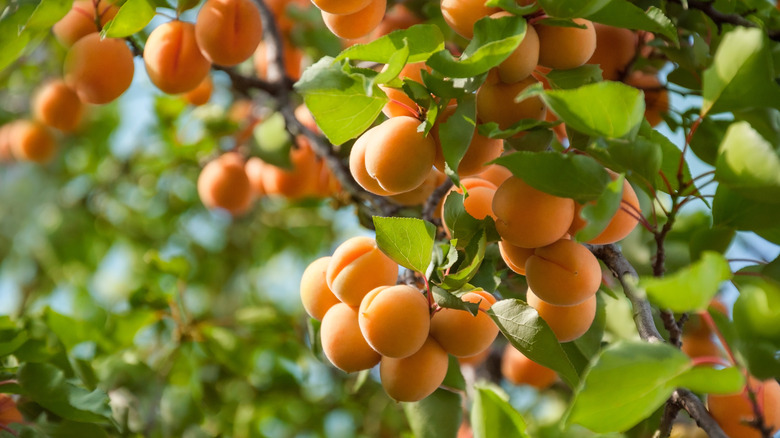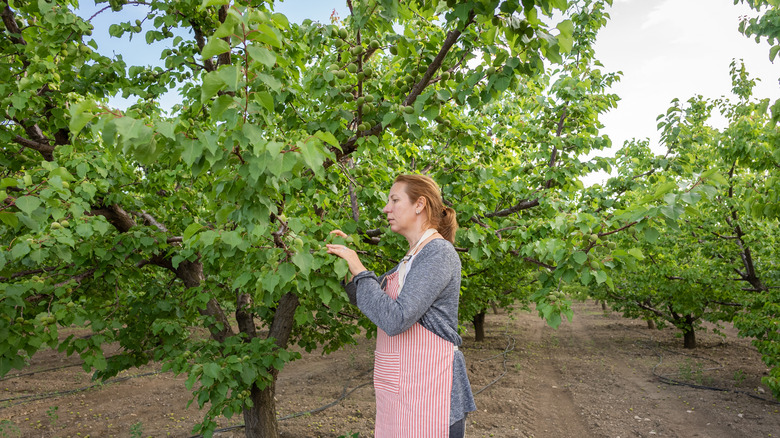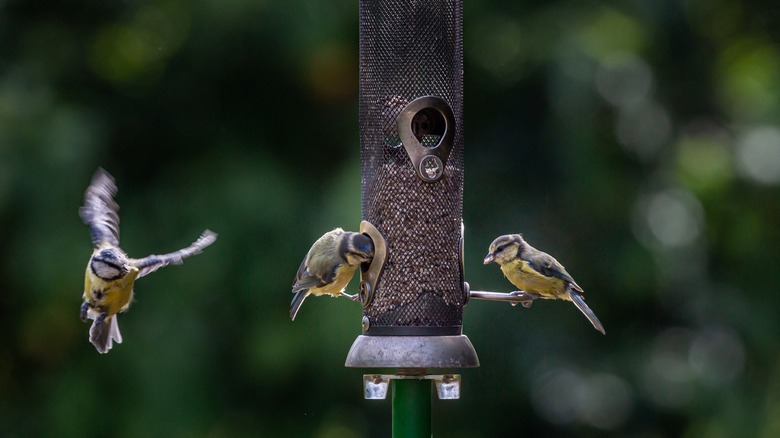The Biggest Mistake Everyone Makes When Planting An Apricot Tree
For those in love with apricots' (Prunus armeniaca) characteristic taste and aroma, the only way to enjoy its juicy sweetness at its pinnacle is to pick the fruit right off the branch as it ripens. In short, you must grow your own apricot tree (or an orchard, for the more obsessed). Regrettably, the fruit tree takes its sweet time — around 4 to 5 years — to reward the grower, assuming spring frosts and cold drafts haven't already damaged the early blooms, a massive concern in cold climates. However, that's not all there is to your fruiting problem. Sometimes, the fault lies with your cultivar — the mistake is not checking if it requires cross-pollination.
Even though apricot trees are touted to be "self-fruiters," meaning they produce their fruit using their pollen without requiring pollination help from their cousin varieties, not all cultivars are so. Perfection, Rival, Goldbar, Goldrich, and Riland are self-unfruitful selections that require additional assistance to bear fruit. Moreover, sharing space with another variety can boost a self-pollinating apricot's yield. So, before you plant apricots, confirm if they'd perform better in a pair.
Your apricot may need cross-pollination
The way fruit production works in most apricot trees is that the pollen from the anther (male) travels to the pistil (female) for fertilization in the same tree. This pollen can land on the same flower or a different one to kickstart the blooming process. On the face of it, it seems like a self-sufficient ecosystem, but unfortunately, not all cultivars get to enjoy it, as also verified by G. F. McLaren & J. A. Fraser's research. For the unsuccessful, it's necessary to have a different variety placed no farther than 50 feet to cross-pollinate, meaning the pollen transfers to the other (pollinizer) tree to set fruits. Some orchard owners plant between 15% and 25% of the total apricot trees as pollinizers for better yields.
However, there's more to the art of pairing two different cultivars. Cross-fertilization is successful only if both bloom simultaneously (even if the ripening time differs). This is because when the flowers bloom, they're receptive to pollen for 12 to 48 hours, with the window shrinking further during hot days. So, if the cross-fertilization doesn't come to pass, there's no fruit to have. Also, the pollinizer variety should be hardy in the same USDA zone to ensure better matching and results. Some viable combinations include Moongold-Sungold and Chinese-Moorpark, but you can contact nurseries for more options. Curiously, some gardeners also choose to fertilize apricots with plums, giving rise to hybrids like Plumcot and Aprium.
Other factors to consider
Even self-fruiting apricot varieties like Wilson, Earli-Orange, Goldcot, and Superb can benefit from cross-pollination, leading to dependable crops and better fruits. It may even raise the total yield of the stone fruit trees. So, check the label for details on production-boosting cultivars before laying them out next to your main variety. However, some disagree, saying that rather than cross-fertilization, what these sweet-smelling trees truly need for higher yields is more pollinator action. Plenty of apricot trees are early bloomers — they don't receive enough assistance from nature's favorite pollinators, like birds, honey bees, flies, and butterflies.
The uncomfortable wet and cold temperatures during the spring's arrival probably throw these helpers off. You can bring more pollinators into your yard by planting a few nectar-making companion plants like lilac, lavender, and heather. Removing flowering weeds and placing a bird feeder in your garden should help attract the nectar-suckers, too. In extreme cases, consider introducing around 2.5 bee colonies per hectare to improve cross-fertilization. Finally, avoid using pesticides during the flowering season.


